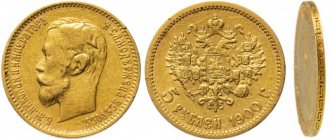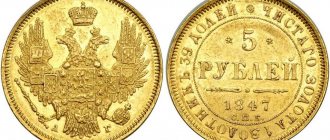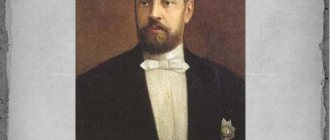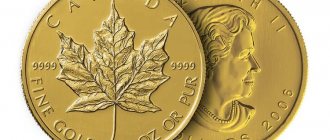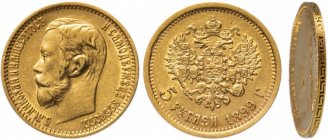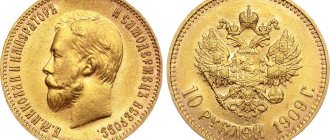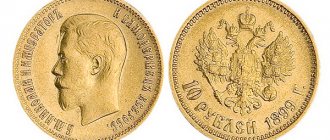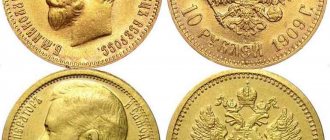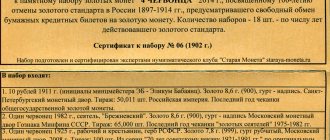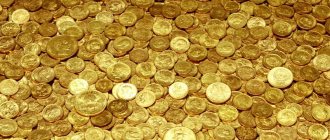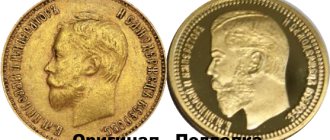Darik and Sigl
Persian Empire, late 6th century BC. e.
1 / 2
Darik. Around 375–340 BC. e. Wikimedia Commons
2 / 2
Sigl. Around 520-505 BC. e. Wikimedia Commons
Nobody knows exactly who and when first invented money. Artifacts that performed one or more functions of money: a universal equivalent, a means of payment, a means of storage - existed almost from the very beginning of human history. The first coins are believed to have begun to be minted in the 7th–6th centuries BC. e. Alyattes, king of Lydia (present-day Western Türkiye). Soon Cyrus the Great, the founder of the Persian Empire, conquered Lydia (its last independent ruler was the son of Alyattes, the famous Croesus) - and began the spread of this ingenious invention throughout his vast possessions.
By the end of the 6th century BC. e., under Darius I, a full-fledged monetary system had already been formed in the Persian Empire. It included silver sigils (about 5.5 grams; the biblical shekel, or shekel, is a word of the same root) and gold dariks (about 8.5 grams). Darius decreed that the darik should be equal to 20 siglas, that is, the system was based on a bimetallic standard - a fixed ratio of the prices of two metals. Thus, the ratio of gold and silver prices was about 1:13 (later gold rose in price very slowly - by the 19th century the ratio reached 1:15.5).
The Greeks usually called Persian dariks and siglis "archers" because they were stamped with an image of a warrior with a bow. In the 4th century BC. e. The Persians bribed the Athenians and Thebans to attack Sparta and force the army of the Spartan king Agesilaus to leave Persia. According to Plutarch, Agesilaus, in response to this, joked that the Persian king was expelling him with the help of ten thousand archers Plutarch, “Agesilaus” (XV)..
The siglas competed, including within the Persian Empire, with Greek silver coins - drachmas. But the Greeks almost never minted gold coins. When Philip of Macedon, the father of Alexander the Great, finally began minting his own gold coin, the Greeks nicknamed it “Philip’s Daric.”
Dariks were readily accepted everywhere from Greece to India and are sometimes called the first international reserve currency. The minting of dariks ceased with the defeat of the Persian Empire by Alexander the Great. However, his new gold coin, stater (“weight”), was an imitation of the darik in size, weight and purity.
Price
In numismatics, the price of an individual specimen depends on its rarity, degree of preservation and artistic value, as well as weight. At auctions or forums, where you can sell an ancient gold coin, the value is constantly changing. Well-preserved Dutch doubloons cost $350, while coins of poorer quality cost $100-$150.
The most expensive ancient gold coins and their value:
- 1933 Saint-Gaudens Double Eagle ($20) – $7 million;
- Double Leopard of Edward III (6 shillings) – 6 million 800 thousand dollars;
- Ephraim Brasher gold doubloon from 1787 – $3 million;
- Coin of Pedro I of the Brazilian Empire 1822 - 138 thousand dollars.
For numismatists who collect rare and valuable money, it doesn't matter how much a gold coin is worth. For those who are just looking to collect European antiques, you can expect prices from 55 (Spanish 5 pesetas) to 740 (double Napoleon) dollars.
Sources:
Sources
- Which coins are expensive and why: list of the most expensive coins in the world
- Ancient coins and their value - Gold
- Ancient coins
- The Long History of Money: Antique Gold Coin
- Foreign gold coins (antique and modern)
- Antique gold coin - numismatic value
- The great history of the Dutch gold ducat
- How much did a good sword cost in Medieval Western Europe?
- Prices and inflation
- How much did bread cost in the Middle Ages?
- THE COST OF MEDIEVAL STUFF
- TABLES OF MEDIEVAL ENGLISH WAGES AND PRICES
Solid
Roman Empire, 4th century AD e.
Solidus of Emperor Valentinian II. 375–378 Yorkshire Museum / Wikimedia Commons
The Roman monetary system, especially during the Late Empire, was very complex: gold, silver and copper coins, imperial and local, coins of various emperors and usurpers, recognized by some and not recognized by others... The situation is especially confusing began after the so-called crisis of the 3rd century - a period of incessant wars and the collapse of the state. Emperor Diocletian (reigned from 284 to 305), in order to restore unity and order, had to carry out reforms that changed the empire almost beyond recognition. One of them was the introduction of a new imperial gold coin, the solidus. The coin came into widespread circulation already under Diocletian’s successors, primarily under Constantine the Great, and now the solidus is associated primarily with his name.
The Konstantinov solidus weighed about 4.5 grams and was minted from the purest gold. Its widespread distribution and persistence helped to more or less stabilize prices in the empire, and with them public finances. The very name solidus (Latin for “solid” - from the same word “solid” and “solidarity” come) was supposed to emphasize its reliability.
The gold from which solidi were minted was mined in the eastern part of the Roman Empire. With its final collapse in the 5th century, gold coins in the West almost disappeared. The barbarian kingdoms and the empire of Charlemagne had to be content with silver money. In the East, in Byzantium, the minting of solidi continued - there they were called nomismas (Greek νόμισμα - “coins”, “currency”). Over the next five centuries, nomismas (in the West they were called bezants, from the name of Byzantium) were the main currency of the Mediterranean. It was in imitation of them that the Arabs began to mint gold dinars from the end of the 7th century.
From the 11th century, Byzantine emperors, mired in ruinous wars, began to reduce the gold content of nomisma. As a result, already in the 13th century, it depreciated so much that the Italian city-states, prospering thanks to Mediterranean trade, had to start issuing their own stable gold coins - florins and ducats.
From the Latin name solida came the designations of several later monetary units, including the French sols (aka sous) and the Italian soldos. In addition, in the Old French language, the word “balance”, derived from “solid”, began to refer to the balance of payments, as well as payment to hired soldiers - soldiers.
Circulation
Most of the ancient gold coins are rare specimens. In Europe in the 13th-17th centuries there were no gold mines of their own, so preference was given to large silver coins, and gold money was minted in small quantities only for international trade. Each new ruler destroyed and melted down the currency of the former king. Therefore, ancient samples have survived in small quantities.
From the 17th century until the end of the 19th century, gold coins were minted in large quantities. In the 17th-18th centuries, 10-15 thousand pieces were published annually, in the 19th century. the number of precious metal samples reached several million. Nikolaev rubles produced from 5 to 20 million copies. But even such popular pieces can be expensive, so before you sell rare antique coins, it is important to learn useful tips.
Florin and ducat
Florentine and Venetian Republics, XIII century
1 / 2
Florin. 1374–1438 Numismatica Varesi
2 / 2
Venetian Ducat. 1400–1413 Wikimedia Commons
With the collapse of the Roman Empire, the flow of gold into Western Europe greatly decreased. The minting of gold coins did not stop, but their circulation was so small and their price so high that they were practically useless in trade. European monetary circulation relied entirely on silver. However, by the middle of the 13th century, trade in Italy had grown so much that merchants had to handle huge quantities of silver, and their storage and transportation became a serious difficulty. At the same time, thanks to eastern trade, Italian merchants became relatively rich in gold. The only difficulty was that the richest Italian cities were dependent on the Holy Roman Empire. The Holy Roman Empire was a supranational union of Italian, German, Balkan, Frankish and West Slavic states and peoples, founded in 962 and considered as a direct continuation of the ancient Roman Empire (the western part of which collapsed in the 5th century) and the Frankish Empire of Charlemagne, whose authorities did not want to share with them the monopoly on coinage.
However, in 1250, Florence, as a result of another uprising, ceased to obey the emperor. Already in 1252, the florin began to be minted there - the first mass-produced European gold coin since the time of the solidus of Constantine the Great.
The florin contained about 3.5 grams of almost chemically pure gold and replaced the silver lyre (this is a measure of weight - the Italian pound, about 329 grams). In 1284, Venice began minting its own gold coin based on the florin. The name ducat (“duke’s coin” or “doge’s coin”) was assigned to it. Florins spread throughout Europe mainly thanks to loans that Florentine bankers (the Scali, Bardi, Peruzzi families, and from the 15th century - the Medici) provided to European aristocrats and kings, and ducats - thanks to Venetian trade in the Mediterranean. As a result, the north of Europe, when minting its money, was more likely to be guided by the Florentine coin, and the south and the Middle East - rather by the Venetian one, although in essence there was no difference between them.
During the 14th century, in Germany and the Netherlands, guilders began to be minted based on the florin (from gulden - “golden”), and English and Hungarian imitations of the florin even retained the same name (the name of the modern Hungarian currency, the forint, goes back to it). In the Ottoman Empire, which was the largest trading partner of Venice, in the 15th century they began to mint sultani - an imitation of the ducat.
The production of Florentine florins ceased in the 16th century, but the Venetian ducat lasted until 1797, when Napoleon destroyed the Venetian Republic. The most impressive thing about the history of the ducat is that at the end of the 18th century it had the same gold content and the same appearance as when it appeared in the 13th century. It was not shaken by any economic and political upheavals of these five turbulent centuries, and it was against it, as an indisputable standard, that the rates of other currencies in Europe and the Mediterranean were measured. Thus, it can be argued that the Venetian ducat was the most stable currency in world history.
Pesos
Spain, XV century
Pesos. After 1497 Wikimedia Commons
When Europeans, represented by Vasco da Gama, discovered a direct sea route to India in 1498, they expected profitable trade, but found that they had nothing to offer eastern merchants. Europe was then a backwater of the world economy and did not produce anything that would interest Indians.
Around the same time, Spanish conquistadors conquered Mexico and Peru. By the middle of the 16th century, in what is now Bolivia, they discovered several huge deposits of silver, including the famous Potosi, or Cerro Rico (“Rich Mountain”), consisting almost entirely of silver ore. Silver was in constant demand in the East, and it was this that flowed there from the West in exchange for silk and spices.
At mints built right next to the mines, the Spaniards minted pesos (Spanish pesos de ocho, literally “peso-eight”: 1 peso was exchanged for 8 reais) - large silver coins modeled on the German thaler (weight - 28-29 grams, purity - about 80%). From the New World, pesos spread around the world in two huge streams: the first - across the Atlantic Ocean to Seville and from there throughout Europe and the Mediterranean, as well as to India along the route laid by Vasco da Gama; the second - across the Pacific Ocean to China and the islands of the Malay Archipelago. On the second route, the main transshipment point was Manila in the Philippines, founded by the Spaniards in 1571 - from that moment on, flows of silver surrounded the entire globe and trade became truly global.
By the end of the 16th century, Spanish pesos-octets, minted in Mexico and Peru, had become the most common silver coin in the world. They were used to pay everywhere - from Jamaica to Java and from Arkhangelsk to the Cape of Good Hope. It was the first truly global currency. It remained in this status until the end of the 18th century.
The coin had many names in different languages. For example, in English it was called either a piece of eight (the literal translation of the phrase peso de ocho, that is, “a piece of eight [reals]”), or a dollar (a distorted “thaler”); in Chinese - shuangzhu (“two pillars”, after the image of the Pillars of Hercules on the Spanish coat of arms, which was minted on a coin); in Italian - piastra (translated as “tile”, “ingot [of silver]”). From this last name comes the most popular Russian name for the peso-octagon - piastre.
Design
Despite the limited possibilities for producing ancient examples, engravers poured all their knowledge into coin art. The beautiful design and rarity of most coins influences how much an antique gold coin will be worth today.
The historical change in the appearance of coins was noticeable and intense. If on the first copies there was no protection against counterfeiting, and the images were extremely primitive, then on medieval money the portraits were a real work of art.
Characteristics of the antique gold coin Dutch Ducat 1724
Material: gold. Sample: 917. Weight: 3.42 grams. Denomination: 1 ducat. Diameter: 23 mm. Thickness: n/a. Quality: Regular minted.
Did you know? Dutch ducats were so popular in Europe and the Ottoman Empire that other countries began to counterfeit them. Copies of the 1724 model were secretly minted in Russia at the St. Petersburg Mint and in Poland. It was possible to distinguish a fake from the original by the drawing. The second and fourth arrows were shorter than the others, the ball was missing from the end of the sword, and the right side of the letter A in the word CONCORDIA was not parallel to the base of the date numerals.
Obverse: The obverse of the coin depicts a knight holding a bunch of arrows in one hand and a sword in the other. Around the circle is the inscription “Concordia Res Parvae Crescunt” (Latin: “Small things grow in harmony”). The number of arrows in the knight’s hand is 8, but their number could vary from 3 to 8. Reverse: On the reverse side is a square containing the inscription “MO. ORD. PROVIN. FOEDER. BELG. A.D. LEG. IMP." (the abbreviation of the text in Latin is “Moneta Ordinum Provinciarum Foederatarum Belgii Ad Legem Imperii”), which translates as “Coin of the Provinces of the United Netherlands under the Law of the Empire”).
Guinea
England, 17th century
Two guineas of Charles II. 1664 Wikimedia Commons
In 1660, the only experiment with republican rule in English history ended: after two decades of civil wars and political chaos, the king returned to the country. This was Charles II Stuart, son of Charles I, who was executed in 1649. The new monarch was in a hurry to erase all memory of the time when the country was ruled by the murderers of his father. In particular, he was impatient to force the money minted by them out of circulation and replace it with new ones, with his image. The problem was that the Royal Mint was constantly experiencing a shortage of raw materials. England's own natural reserves of silver were small, and it was unprofitable to mine it, since the market was flooded with cheap silver from the Spanish colonies in America. England did not have its own gold deposits at all. That is, in order to mint coins, it was necessary either to buy metals abroad or to buy back old coins from one’s own population.
Soon after his accession, Charles established the Company of Royal Entrepreneurs trading with Africa. It quickly unfolded in Guinea, a region in western Africa from which Europeans exported slaves, ivory and gold. Charles began minting a new coin from Guinean gold, called the guinea.
The history of English money in the second half of the 17th and early 18th centuries is mainly the history of the struggle to preserve the bimetallic standard, that is, a monetary system based on a solid ratio of gold to silver. In Amsterdam, then the world center of foreign exchange transactions and trade in precious metals, one weight unit of gold was equivalent to 15 units of silver. In England, gold was valued higher - at least 15.5 units. This was mainly due to the fact that there were a huge number of old, roughly hand-minted silver coins in circulation (many of them were issued 40, 50, or even 100 years ago), worn out and cut off at the edges, as well as counterfeits. No one trusted silver money, while guineas, relatively rare and well protected from counterfeiting (they were minted by machine), enjoyed universal trust and therefore traded at a premium to the nominal price.
The guinea had a denomination of 1 pound sterling. The pound sterling was an English monetary unit, originally (around the 11th century) literally a pound (just over 450 grams) of small silver coins called sterling. Under Charles II, it actually contained only about 120 grams of silver (a pound was equal to 20 shillings, each coin contained approximately 6 grams). (20 silver shillings), but in fact it was never paid for less than 21 shillings. This meant that if you melted silver money into bullion, took it to Amsterdam and sold it there by weight, you could make a profit of five percent minus production and transport costs (silver was more expensive as a commodity than as English coins). By the 1690s, the guinea had reached 30 shillings. Profits from the export of silver from England increased so much that the silver money leaving the Royal Mint in the Tower often did not have time to cool before it was melted down to be sent to Amsterdam.
The next attempt to save English bimetallism was the Great Recoinage of 1696: the treasury bought old silver money from the population at the market rate, and in return issued new, full-weight, machine-made ones. After recoining, the guinea rate dropped from 30 to 22 shillings. The mint at this time was headed by Isaac Newton. In 1717, he proposed legislation to prohibit the exchange of a guinea for more than 21 shillings. But even after this, a unit of silver in the Netherlands or France was still worth more than in England, and its outflow never stopped. The English government abandoned further attempts to establish a fixed ratio of gold to silver and actually switched to the gold standard (however, this was legislated only a century later).
The minting of guineas ceased in 1813, and in 1817 the £1 sovereign was issued as the new standard gold coin. However, the guinea survived as a unit of account equal to 21 shillings (1.05 pounds) until the pound was converted to decimalization in 1971. It is precisely as a counting unit that it is found every now and then in Victorian literature, including in the stories about Sherlock Holmes.
European antique gold money
Spain is famous for its rich history, where the first gold coins appeared in the 12th century, when Arab influence was strong in this territory. The first Spanish gold coin was called “maravedi”, it copied the Arabic dinar. Maravedis weighed four grams, of which three and a half were pure gold.
After the Arabs were expelled from the Iberian Peninsula, and Spain gained political and military weight in the world, annexing colonies in the New World (the ancient name of America), new money began to be minted from the gold brought from there. In 1535, the first gold escudos made of 917 gold were issued in Barcelona. One coin weighed four grams, and it contained three grams of pure gold. The obverse was decorated with a coat of arms, and on the reverse there was a Christian cross.
The first king of Spain, Philip II, contributed to the active circulation of gold escudos and their establishment as the main gold coins. But already in 1864, the cheaper silver escudo began to play the role of the main monetary unit of Spain. In 1876, new gold coins of 20 and 25 pesetas were launched into mass circulation. And in 1897, they also began to produce a hundred pesetas in one coin. But in 1904, the production of all gold and silver money in Spain was stopped, and since then only limited collectible quantities have been minted.
In Germany and Austria, until 1914, gold coins in denominations of ten and twenty marks were actively used. The last such coins were minted in 1916 in the city of Württemberg. They were created from nine-hundredth standard gold. They were dedicated to the anniversary of Kaiser Wilhelm II, the last German Emperor and King of Prussia, who reigned from 1888 to 1918. But these ancient coins were intended for collection, not mass distribution.
The most famous ancient gold coin issued in France has two names among the people:
- "Marianne";
- "rooster".
This is what the gold coins of ten and twenty francs are called. They received the name “Marianna” because of the girl depicted on one of the sides of the coin. The image of the beautiful Marianne appeared during the Great French Revolution. It symbolizes freedom.
On the other side of the ancient coin there is a rooster, the symbol of France. Therefore, the second popular name for this gold money is “rooster”. On the reverse side of the coin, its denomination is also indicated and the words “liberte, egalite, fraternite” (freedom, equality, fraternity) are embossed. Their minting began in 1898 and ceased at the outbreak of the First World War in 1914.
Another ancient French gold coin popular among numismatists is popularly called the “genius”.
She was the predecessor of the "rooster". Gold twenty-franc coins were issued for a short period from 1818 to 1849 and again from 1871 to 1898. After this, they were replaced by the gold "rooster". But the “genius” continued to exist in coins of 50 and 100 francs. They began to be minted in 1878 and ceased production in 1914.
Efimok with a sign
Russia, XVII century
Efimok with a sign. 1655 Coinage on a 1637 thaler Wikimedia Commons
The main problem of monetary circulation in Russia since ancient times was the lack of its own precious metals. There are no large deposits of either gold or silver on the East European Plain, and Siberian deposits began to be truly developed only in the mid-18th century. Before this, money was minted only from imported silver. In the 16th–17th centuries, as a rule, it was brought in the form of thalers - large European coins with which foreign merchants paid for Russian export goods. The oldest of these coins was the Joachimsthaler from the beginning of the 16th century. The last Joachimsthaler was minted in 1528. In Russia it was nicknamed efimko. The same name subsequently spread to other thaler coins. The most famous thaler coin is the piastre. Thaler coins were also minted by Lubeck and Hamburg (cities included in the Hanseatic Trade Union), England (silver crown). The Dutch Levendalder was formally also a thaler coin, but in fact it had a lower standard and was valued lower. Silver came to Russia mainly in the form of a variety of North German thaler coins and Löwendalder coins.
At Russian money courts, efimki were melted, and kopecks were minted from the resulting silver (the ruble existed only as a unit of account; in physical form it was represented by a pile of 100 kopecks). An average of 64 kopecks came out of one efimka. At the same time, the official exchange rate from the middle of the 17th century was 50 kopecks per efimok - the difference was the treasury’s profit.
In 1654, under Tsar Alexei Mikhailovich, a major monetary reform was carried out in Russia: copper pennies began to be minted, and a silver ruble was introduced on the model of the thaler. The problem was that the ruble in the old silver kopecks, which still formed the basis of circulation, contained about 47 grams of silver, while the new ruble contained only 28–29 grams. The commodity price of old money turned out to be significantly higher than the nominal value, and people began to hide them. The new ruble turned out to be unviable.
Already in 1655, the tsar's advisers invented a new technique: thalers were not melted, but were simply minted with a penny stamp (this was called a “sign”) and issued into circulation at a face value of 64 kopecks. At the same time, the treasury did not lose anything, saving on waste (loss in the weight of silver during smelting) and on the wages of money masters.
However, the efimok with the sign also did not last long: copper money soon almost completely replaced all silver from circulation, prices began to rise, and it ended with the Copper Riot of 1662 and the abolition of all innovations in the monetary sphere. The ruble, modeled on the thaler, appeared in Russia only half a century later on the initiative of Peter I.
